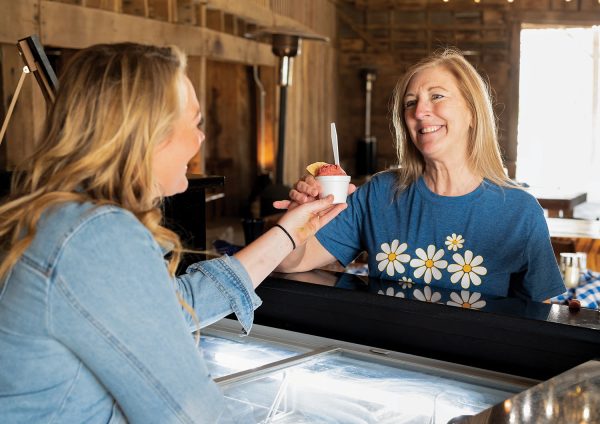Getting a grip on the glass
January 29, 2013
Let’s face it. With thousands of vineyards and varietals (grape varieties) along with countless methods of fermentation and viticulture (grape cultivation), wine is massive. New vineyards are popping up around the world every day, and there is always something new to learn or taste.
Don’t fret — there are a few basics you can quickly and easily master which will put you at ease as you step into this lush, mysterious place.
It is as simple as the way you drink wine. You don’t get the full texture and taste of the wine by simply drinking. A common saying is “Swirl, Sniff, Sip, Savor.” To fully experience each unique wine to its full potential, these steps will help bring out the qualities each wine has to offer.
You should often let your red wines set 30 minutes to one hour after opening before you sip. This is not necessary with older wines as oxidation helps young grapes which can taste “tight” open to their full potential of flavor.
Ever heard the saying “you first eat with your eyes”? Well, tasting wine uses four of your five senses, taste and touch being last. Some say touch isn’t involved, but how would you notice the tingly fizz of champagne without it? After your patience has near expired, pour your wine up to the widest part of the glass.
Tilt your glass at eye level against a good light source to observe the rim of the wine against the glass. Here you can see the color in which a crimson will signal an aged wine while a purple red gives away a young wine. Aged wine tastes matured, sometimes even dusty, as each flavor is well-balanced. Younger wines are not always to their peak of married flavors.
Next, set your glass on a flat, sturdy surface, and carefully spin in a tight circle or figure eight. Once you are practiced, you should be able to do this in the air without spilling. This oxidizes the wine and brings the wine further up the glass which helps in the next important step.
Put your nose to the glass, and take a few deep breaths. At first, you might only pick up on the smell of alcohol, but the more you practice, the more you will pull from the wine. Cherry, berry and oak? Maybe citrus, pineapple and a hint of peach?
Now you get to drink. Make sure to carefully pull air into your mouth as you sip. Oxidation does wonders for fully experiencing wine. It isn’t uncommon to hear a lot of slurping at wine festivals as it is not considered rude but learned. By pushing and pulling the wine across your tongue, you can feel the texture of the wine. Often, it will dry your mouth and make you pucker in which you are experiencing the tannin in red wines from the grape skins.
Now that you have mastered the wine etiquette of tasting, here are a few helpful hints for feeling even more comfortable in the world of wine.
Fully chill whites before serving, but not reds. However, you should put your bottle of red in the refrigerator about 10 minutes before serving to keep it above room temperature. Heat brings out the taste of alcohol, overshadowing the flavors of the grape, soil, barrel or vat.
You will want to remember that storing wine on its side is ideal compared to standing the bottle straight up. Over time, air escapes through the cork which can make the wine go bad before opening. Keeping the wine against the cork instead of the pocket of air better prevents this.
Also, if you have a bit of wine left after drinking, don’t re-cork the wine with the original cork. Air will escape making it go bad and in return, taste like vinegar. Instead, use a reusable wine-stopper as this will keep it fresher, longer.
Hopefully these hints comfort you as you step into the fruitful world of wine.

















![Megan Inman of Tennessee cries after embracing Drag performer and transgender advocate Jasmine St. James at the 9th Annual WKU Housing and Residence Life Drag Show at Knicely Conference Center on April 4, 2024. “[The community] was so warm and welcoming when I came out, if it wasn’t for the queens I wouldn’t be here,” Inman said.](https://wkuherald.com/wp-content/uploads/2024/04/smith_von_drag_3-600x419.jpg)







